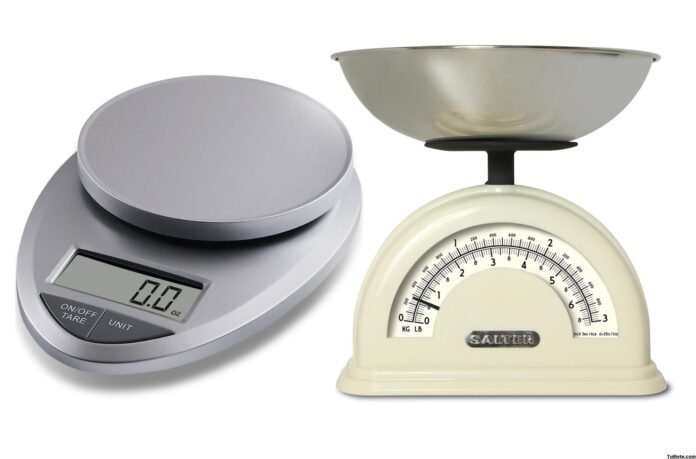Have you ever wondered how much is a “ounce” really weighs? Whether you’re an aspiring chef, a fitness enthusiast, or just someone curious about measurements, understanding the ins and outs of ounces can be incredibly valuable. In this blog post, we will delve into the world of ounces – from basic definitions to practical conversion tips. So grab your measuring cups and let’s uncover the mysteries of this versatile unit of measurement!
Understanding the Basics: What is an Ounce?
In the realm of measurements, an ounce is a unit that often sparks curiosity and confusion. So, what exactly is an ounce? At its core, an ounce is a unit of weight or mass commonly used in the United States customary and British imperial systems.
In simpler terms, it represents a small portion of something – whether it’s ingredients for your favorite recipe or precious metals like gold and silver. When you see “oz” on packaging or recipes, it signifies the weight measurement being referred to.
It’s important to note that there are different types of ounces out there – namely fluid ounces (for liquids) and dry ounces (for solids). Understanding these distinctions can make a world of difference when it comes to precision in your measurements!
Differences Between Ounce Measurements (Fluid vs. Weight)
When it comes to ounces, there are two main types of measurements: fluid ounces and weight ounces. Fluid ounces are typically used to measure liquids, while weight ounces are used for solids or dry ingredients. The key difference lies in the density of the substance being measured – liquids have a consistent volume-to-weight ratio, whereas solid objects can vary in density.
For example, a fluid ounce of water weighs approximately 1.043 oz because water is denser than other liquids. On the other hand, when measuring something like flour or sugar in weight ounces, you need to consider how compacted or airy the substance is to get an accurate measurement.
Understanding these differences is crucial when following recipes that call for specific measurements by weight or volume. It ensures that your dishes turn out just right and taste delicious every time!
Common Uses for Measuring in Ounces
Common Uses for Measuring in Ounces:
Ounces are commonly used for measuring both weight and volume in various aspects of daily life. In the kitchen, recipes often call for ingredients to be measured in ounces, such as flour, sugar, or liquids like milk or oil.
When it comes to beverages, ounces play a significant role in serving sizes for drinks like coffee, juice, soda, and alcohol. Understanding how many ounces are in a standard serving can help you monitor your intake more effectively.
In the world of skincare and cosmetics, products are often packaged and sold by the ounce. This measurement ensures consistency when applying creams, lotions, serums, or makeup.
Furthermore,
Whether you’re mailing a package at the post office or measuring out portions for meal prep purposes,
the ounce is a versatile unit of measurement that is widely used across different industries and contexts.
Converting Ounces to Other Units of Measurement
Converting ounces to other units of measurement can sometimes feel like a complex task, but with the right knowledge, it can be quite straightforward.
When converting ounces to pounds, keep in mind that there are 16 ounces in a pound. So if you have 8 ounces, that would equal half a pound.
For those looking to convert ounces to grams, remember that 1 ounce is equivalent to approximately 28.35 grams. This conversion is commonly used when measuring ingredients for recipes.
If you need to convert ounces to milliliters for liquids, just know that 1 fluid ounce is about 29.57 milliliters. This conversion is handy when dealing with liquid volumes in recipes or medications.
Understanding these basic conversions can help make your cooking and baking experiences more precise and enjoyable!
Tips for Accurate Measurement and Conversion
When it comes to accurately measuring and converting ounces, there are a few tips that can make the process smoother. Always ensure you are using the right type of ounce measurement – whether it’s fluid ounces or weight ounces. This will avoid any confusion in your calculations.
Invest in a reliable kitchen scale for precise weight measurements. Using measuring cups or spoons for liquids and powders can also help maintain accuracy in your recipes.
Additionally, familiarize yourself with common conversion factors to easily switch between different units of measurement. Online converters can be handy tools when you need to quickly convert ounces to grams or milliliters.
Practice makes perfect! The more you work with measuring ounces, the more comfortable and proficient you will become in handling conversions effortlessly.
Alternative Ways to Measure an Ounce
Ever find yourself in a pinch without a measuring scale but still need to measure an ounce? Fear not, there are alternative ways to get the job done accurately. One method is using common household items like tablespoons or cups to estimate the weight of an ounce. For example, one fluid ounce is equivalent to two tablespoons.
Another handy trick is utilizing comparisons for visual estimation. An ounce of meat can be roughly the size of a matchbox, while an ounce of cheese is similar in size to four playing dice stacked together.
When precision isn’t crucial, simply dividing larger quantities into smaller portions can help approximate an ounce. Additionally, some food packages provide measurements in ounces for convenient reference during cooking and baking.
These alternative methods come in handy when traditional scales aren’t available or when you’re looking for quick approximations on the fly.
Conclusion
Understanding how much an ounce weighs and its various conversions is essential for everyday tasks in the kitchen, at the store, or even when crafting. Whether you’re measuring ingredients for a recipe or comparing product sizes while shopping, knowing how to convert ounces accurately can make a significant difference.
By grasping the basics of ounces as a unit of measurement and being aware of the differences between fluid ounces and weight ounces, you can navigate through various measurements with ease. Remembering some simple conversion factors and tips for accurate measurements will help you confidently use ounces in your daily life.
So next time you come across an ounce measurement, whether it’s on a food label or in a recipe, you’ll know exactly how much that oz weighs and be ready to tackle any conversion challenges that come your way. Happy measuring!


